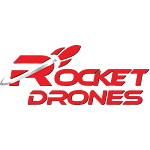In today's fast-changing world, students need more than just traditional textbooks to succeed. They require tools that equip them for real challenges. Drones are not just innovative machines; they serve as entry points to science, technology, engineering, and mathematics (STEM). In the classroom, drones provide dynamic, hands-on learning experiences that integrate coding, physics, and design. The Drone Curriculum equips students with essential skills directly applicable to future careers. This approach to education provides an engaging and interactive way to develop critical thinking, creativity, and problem-solving skills. With drones, students are actively engaged in learning, using technology to solve real-world problems. In this article, you will explore the importance of drone-based learning in shaping the future of education, fostering innovation, and ensuring student success in a rapidly advancing digital world.
Making STEM Subjects Fun and Real
Many students find math and science hard because they don't see how it applies to real life. But drones change that. Flying a drone is not just fun—it teaches principles like gravity, angles, and speed. With the Drone STEM Curriculum, students apply what they learn immediately. They understand how math and coding guide drone movement. This makes abstract ideas real and exciting while also building essential problem-solving and analytical skills. Through practical applications, students gain a deeper understanding of complex concepts, enhancing their learning experience and future capabilities in various fields.
Hands-On Skills That Last a Lifetime
It's one thing to read about technology—it's another to build and fly it. That's where Drone STEM Kits come in. These kits help students work together to solve problems, create designs, and fly missions. As they build and program drones, they gain teamwork, planning, and problem-solving abilities. These are real-world skills that every future employer values. From understanding circuits to writing code, hands-on drone projects turn curious minds into capable creators.
Boosting Creativity Through the Skies
Drones aren't just about science—they also spark creativity. Students can use them to create aerial videos, plan delivery missions, or explore virtual landscapes. Whether it's designing a race track or coding a drone to follow a path, young minds learn how to think outside the box. In many schools, Drone Racing for Schools adds a competitive twist that excites students and gets them more involved in learning. Racing challenges develop quick decision-making and teamwork in fun, engaging ways.
Preparing Students for Tomorrow's Jobs
As drones become more common in industries like agriculture, construction, and emergency services, drone skills are becoming job skills. Learning with drones is more than a hobby—it's career training. With the help of a solid Drone STEM Curriculum, students can start preparing early for roles in tech, engineering, or even aviation. It builds a strong foundation that sets them apart in a competitive world.
Overview:
A smart classroom adapts to the evolving needs of students and technology. Incorporating drone-based learning provides schools with a dynamic, engaging, and innovative educational experience. This approach merges fun with purpose, allowing students to learn valuable STEM skills in an engaging, hands-on way, preparing them for the future. Companies like Rocket Drones lead in educational drone programs, providing schools with tailored tools and organized learning pathways for success. Their unique approach fosters creativity, problem-solving, and technical skills that go beyond traditional learning. Rocket Drones supports students in mastering real-world applications, making STEM subjects more accessible and enjoyable while preparing them for future careers in tech.



